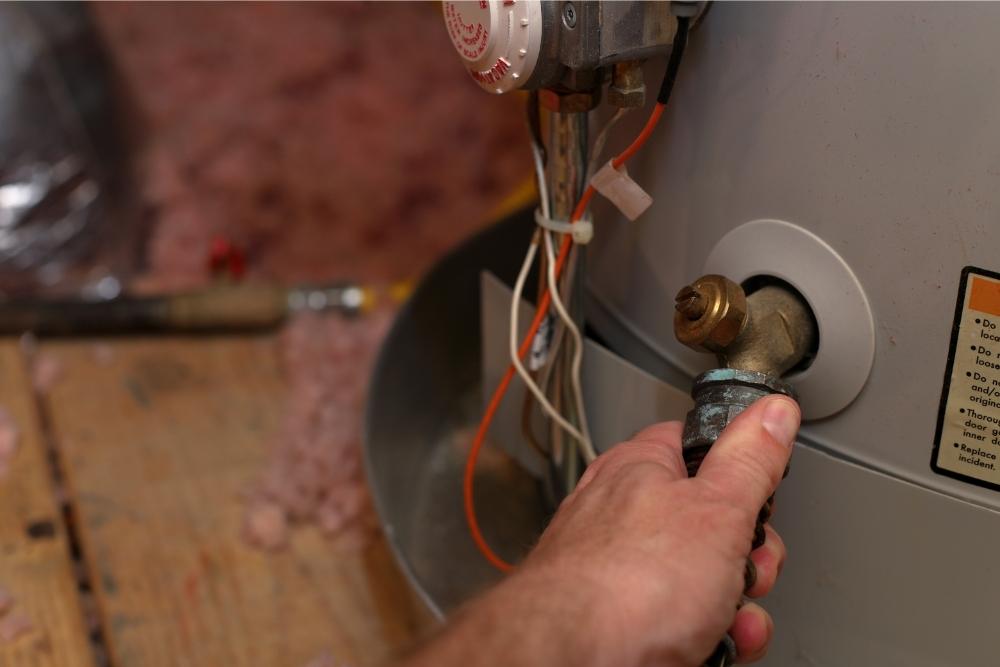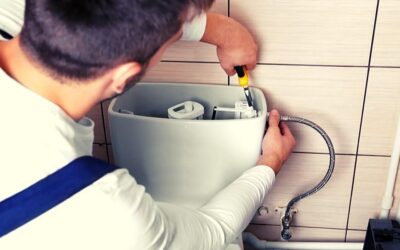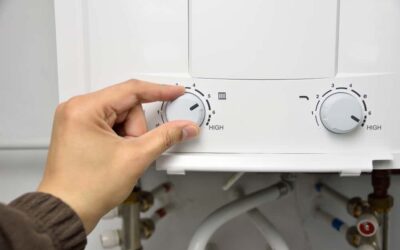While the water heater is arguably one of the most used appliances in any home, it also remains one of the most overlooked, which can lead to serious problems for you and your plumbing.
Fortunately, the task of maintaining your water heater is very simple and is only required once a year to benefit your heater’s lifespan.
However, this does not mean that the process does not come with a level of skill, as you will need to gather the correct tools and supplies for the job.
So if you are wondering how long it can take to drain your water heater, then you have come to the right place.
In the following article, we are not only going to cover how long the process will take but how you can complete the process in a fast and efficient manner.
Though draining your water heater may seem like a complicated task, we promise that it can be done quickly if you use the following method.
So if you are ready to give your water heater the love and attention it deserves, this article has everything you need to get started…
How Long Does It Take To Drain A Water Heater?
Draining your water heater is something that should be done once a year to make sure that your water is clean and that the system is running properly.
And while the draining process may appear complex, it can be done in 15 minutes depending on the size of the water heater that you own.
However, draining your water heater does come with some serious preparation, which means you may need to set aside a whole day to fully complete the process.
The following method that we have outlined can take up to 2 hours to complete, although this time will vary depending on the size of the model that you are working with.
What You Will Need
Before we can teach you how to drain your water heater, you must first understand the tools you will need to complete the job.
That is why we have compiled the following list of everything you will need to drain your heater:
- Water Hose: To determine the length of your water hose, you will need to measure the distance between your heater and the area where you will be draining the leftover water.
- Pan: It is advisable to use a stainless steel mixing bowl so that you can get a clear picture of what the drained water looks like.
- Old Towel: While draining your water heater, chances are you will get wet and dirty so having a towel close to hand is always a good idea.
- Screwdriver: If you do not have a handle on the drain valve of your heater, then you can use a screwdriver to maintain your grip.
Before You Begin
The first thing you will need to do before draining your heater is to check the temperature and pressure relief valve.
This is because if your valve shows any signs of wear, then it will need to be replaced while you are draining your tank.
How To Check Your Relief Valve
- Place your stainless steel bowl under the valve so that it may catch any water that happens to come out.
- Locate the lever on top of the valve and slowly raise it until it produces a slight hissing sound or a small amount of discharge from the mainline.
- When you hear the sound or see the water, close the valve and start draining the tank. If you do not see either, you will need to replace the valve and drain your heater at the same time.
To obtain the correct replacement part for your heater, use the information provided on the rating tag attached to the top of your valve.
You should be able to purchase the proper model from your local hardware store or from websites such as amazon.
How To Drain Your Water Heater
Now that you have checked your pressure valve and gathered the proper tools, let’s take a look at how you can drain your water heater:
- If you are working with a gas water heater, then you will need to turn the burner control knob to the pilot position. To do this, push down on the control so that it will turn, then there should be a table below the knob to confirm your selection. Once you have reached the correct position, the knob should be notched out and there should be a red pilot button to show you’re in the correct place. However, some newer models will have a different knob design. If you are working with an electric water heater, then you will need to turn the breaker off on the electrical panel, so that the power will be cut.
- For the next step, you will need your hose. This is because the water tank will be extremely hot and needs to be cooled down before you can start draining the system. So to speed up this process, turn on the hot water in your kitchen sink and then retrieve your hose. This will help to drain the tank of any excess water while also replacing it with cool liquid. Next, you will need to attach your hose to the drain valve and route it to the drainage point. This can be a well, a floor drain, or a cleanout, as long as it can carry the water to the sewer or street.
- Once you have done this, you will need to shut off the flow of cold water going into the tank. This can be done by using the cold water line, which will allow you to stop the water without cutting off the house’s supply. However, if you do not have a cold water line, you will need to locate the main water line and shut down the cold water from there. Before beginning this process, we recommend that you determine how to shut down the cold water before you begin draining.
- For the final step, you will need to open the drainage valve on your tank and begin draining your water heater. Depending on how long you had to run your hose, you should be able to see the water draining almost immediately. However, if the process remains slow, then this could mean that your hose is obstructed in some way. So to overcome this problem, follow your house and remove any kinks or heavy objects that could be disturbing the flow.
- Now that your water heater is being drained, you will have to wait until the process is complete, which can take around an hour depending on the size of the water heater you are working with. So go and relax with a cold beverage until you are ready to seal everything back up and flush your tank.
Why Should You Drain Your Water Heater?
While we may pretend that the water we use is the cleanest it will be, this is not necessarily true.
In fact, the water in your heater will often fall victim to a collection of different debris, which will accumulate at the bottom of your tank.
In addition to this, your tank will also begin to corrode and release its bacteria into the water.
Now, this may not sound like the best water for drinking and cleaning, which is why you will need to drain your tank to rid your supply of any unwanted matter.
Beyond cleaning your supply, draining your water heater also comes with the added benefit of lowering utilities and enhancing the heater’s lifespan.
So if this all sounds good to you, then it may be time to start draining your heater once a year to maintain its condition and longevity.
Final Thoughts
And there we have it, that is how long it can take to drain your water heater. While some drainings can only take 15 minutes, others can take a few hours depending on the size of the heater itself.
While the method we have outlined can take around 2 hours to complete, it still remains one of the fastest approaches available, especially when you consider the amount of preparation and work that needs to be done first. You can also ask the help of professional water heater plumbers for this task.
Frequently Asked Questions
How long does it take to drain a 20-gallon water heater?
In most cases, the time it will take to drain your water heater will depend on how much corrosion and mineral has built up in the drain.
However, in most cases, the actual draining should only take 10-15 minutes.
What happens when you can’t drain your water heater because your hose will have to go uphill?
If you start draining the water, you will be pleasantly surprised at how fast the pressure can push the water, even if that means going uphill.
Although it may not be able to reach all the way, the water should still drain regardless. However, you can also put on your hot water faucet and cut the lines to drain the water.
Though this may result in your tank still containing some cold water that will need to be drained. This can be done by using a bucket or other means.
How much water should you drain from a 50-gallon water heater?
When tackling such a large model, you will need to drain the entire 50-gallons.
However, if you leave the incoming valve off, then your tank will continue to drain until you close the valve and stop the flow.







